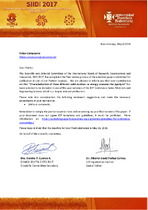Characterization of three different solid wastes as energy resources for pyrolysis

Ver/
Fecha
2018Director/Asesor
N/A
Tipo de contenido
bachelorThesis
Citación
Metadatos
Mostrar el registro completo del ítemDocumentos PDF
Resumen
This work aimed the chemical and thermochemical characterization of three different solid wastes in order to identify promising properties for their further energy valorization by pyrolysis. The chosen materials were: (i) rice husk (RH), (ii) waste tire (WT), and (iii) municipal solid waste (MSW). The characterization techniques used were elemental, proximate, and heating value analyses. In addition, thermogravimetric analyses (TGA) in N2 atmosphere were also conducted. The obtained results showed that RH has a higher heating value (HHV) of 15.30 MJ/kg and contains less carbon (~41 wt.%) and more oxygen (~38 wt.%) than conventional fossil fuels. The WT has a significant HHV (37.92 MJ/kg) mainly due to their high carbon content (~81 wt.%) and the low oxygen content (~2 wt.%). The MSW, free of metal and glass materials, was mainly composed of volatile matter (~92 wt.%), and showed a HHV of 22.41 MJ/kg. The TG diagrams exhibited different reaction zones which were associated with the decomposition of the main constituents of each sample. This simple but important characterization procedure could be considered as a fundamental tool for the qualification (expected characteristics of the final pyrolysis products) and quantification (maximum conversion efficiency) of the effect of some feedstock properties on the pyrolysis process. In this sense, this work is the starting point for the evaluation of pyrolysis process as an energy valorization method of different wastes.
Palabra/s clave
Deshechos orgánicos
Medio ambiente
Pirólisis
Colecciones
- Trabajos de grado [6698]
El ítem tiene asociados los siguientes ficheros de licencia:

